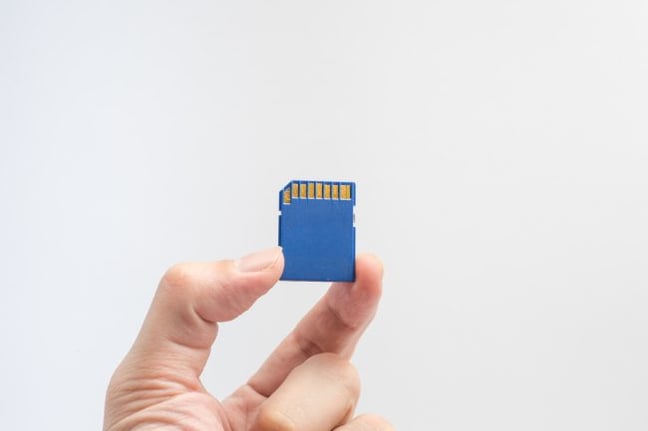Could SD Cards Be The Future Of Storage?
- mark o
- July 5, 2018
- 04:26 PM
- No Comments
Can big things come in small packages?
In light of GDPR, businesses are acutely aware of the importance of data protection, with discussion surrounding how businesses securely protect information now commonplace. Businesses should also give regular thought to the storage methods they employ to house that data, both physically and in that mystical, digital realm known as the cloud.
Data and analytics are a key part of business strategy, and it goes without saying that SMEs are being asked to store more and more data as each year passes. It used to be the case that the cost of storing large quantities of data was such that businesses had to decide on the best approach that wouldn’t offset the balance books too much.
It was also true that large chunks of data would have to be stored in high-capacity hard drives, backed up somehow to avoid any unwanted outcomes from data loss or corruption. These days, both cost and size are far less of an issue, with portable storage of increasing capacities available at ever more affordable prices.

And a recent announcement could make an even bigger change for business in the future.
The SD Association, the organisation that decides on global memory card standards, has announced the new SD 7.0 specification, describing it as a “revolutionary innovation for SD memory cards”.
The headline figure of this new announcement is undoubtedly the new SD ‘Ultra Capacity’, which will see the storage capacity in SDUC cards rise to a massive 128TB - a huge leap from the current 2TB. This kind of storage would prove more than enough for many SMEs and business individuals, while also providing a greater degree of flexibility in how businesses carry and transfer data around.
The other key area of note from the Association’s announcement is that this new standard would also add PCIe and NVMe interfaces to the SD interface. Labelled SD Express, this development essentially means the delivery of faster transfer rates (the PCIe interface allows for a maximum data transfer rate of 985MB/s). These impressive speeds utilise the second row of ‘teeth’ on some of today’s UHS-II cards, and the new specification is also backwards compatible, so any new cards could be handled by existing readers.

The SD Association is so pleased with its progress on this that’s it’s gone as far as stating that this new protocol would be akin to “turning cards into a removable SSD”. Possible applications for cards using the 7.0 specification include delivering the necessary speeds “to move large amounts of data generated by data-intense wireless communication, super-slow motion video, RAW continuous burst mode and 8K video capture and playback, 360 degree cameras/videos, speed hungry applications running on cards and mobile computing devices”, and so on.
At this stage, of course, this is simply a specification, and it could - and likely will - be years before we see any Ultra Capacity or SD Express-enabled cards released to the public. However, it does shine a light on a possible data future. As remote working is increasing and the business environment is becoming more flexible, the potential to store large amounts of data on the move, and to access and transfer that data at much faster speeds, is an enticing one.
SSDs (solid-state drives) have provided significant performance gains to systems over the past few years, with these improvements often seen to outweigh the additional cost compared with hard drives. With SD cards potentially offering faster speeds and even more portability across a wider range of devices, this would provide the necessary performance and capacity to keep up with future content - and speed-hungry applications and devices.
Revolutionary, the association says. It could be right.
Want to know more about TMB and our services? Check out our Resources page for a collection of downloadable brochures and guides.

